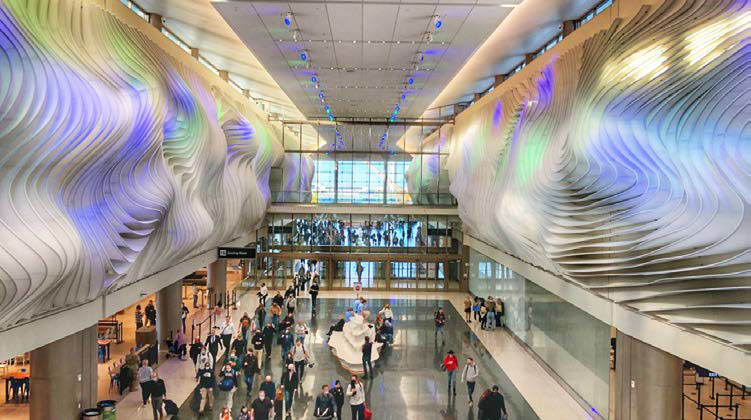Brice Wallace
Already on the rebound from the effects of the COVID-19 pandemic, Utah’s travel and tourism industry is in good health and expected to see strong and steady increases over time.
And the leader of the Visit Salt Lake expects the next decade to be a time for Salt Lake to shine.
Several major cities, such as Portland and Boston, have had their time in the limelight, and Salt Lake City is now, according to Kaitlin Eskelson, president and CEO of Visit Salt Lake, which promotes Salt Lake as a convention, meetings, sports events and travel destination.
“We are in this period of renaissance and it’s super-exciting,” Eskelsen said as a panelist at a recent Newsmaker Breakfast at the Kem C. Gardner Policy Institute. “All of the items are coming together. I think, in a way, the pandemic allowed us to pause a little bit, and when we came out of it, all of our clients, our visitors, were like, ‘This is a totally different Salt Lake than when the pandemic started.’”
Among the differences are a remade Salt Lake City International Airport, new lodging properties and new product offerings, she said.
“It’s a really exciting time. I think that we’re going to view this as historic for Salt Lake, and I think that in a lot of ways, we’re on the map — in a lot of different ways, whether it’s from the convention side, the sports side, the major-events side.”
The city successfully hosted the NBA All-Star Game earlier this year and is working toward hosting a future Winter Olympic Games.
“I think the next 10 years-plus is going to be our time to really start shining,” Eskelsen said. “It’s interesting because [with] Salt Lake, I think we as residents have always known how amazing it is, and it’s just taken a while [for others] to catch up, and now we’re there.”
Natalie Gochnour said the travel and tourism industry in Utah has experienced “strong” growth since the pandemic three years ago. Visitor spending, jobs and tax revenue have all recovered strongly and are at levels greater than three years ago,” she said.
Visitor spending in 2022 totaled about $12 billion in Utah, up 5 percent from the year before and up 2 percent from pre-pandemic 2019. Jennifer Leaver, senior tourism analyst at the Gardner Institute, said spending by international visitors in 2022 was not quite up to pre-pandemic levels “but I expect it to be right back up there in 2023, or very close.”
The tourism industry also supported more than 152,000 jobs last year, a record high. The total of a subset, leisure and hospitality jobs, is up 6 percent since 2019. While not as large an increase as seen in other Utah industries, it compares well to other western U.S. states, which are down more than 4 percent during that time, Leaver said.
Other trends include a record $2.6 billion in visitor spending at ski resorts, up 6 percent from the prior season and up 32 percent from pre-pandemic levels, boosted by a record year for snowfall. The number of skier visits totaled 7.1 million. Visits to Utah’s national parks were down 7 percent year over year — people rushed to parks in 2021 with pent-up demand after the pandemic — but in line with the number before COVID, about 10.5 million. State parks saw a visitation bump in 2021 and it’s leveled out at about 10 million.
The industry also generated over $2 billion in state and local tax revenue last year, and hotel occupancy in Salt Lake County is up despite have more than 1,000 new hotel rooms.
Vicki Varela, managing director of the Utah Office of Tourism, said Utah is fortunate to have “these amazing landscapes,” saying “Mother Nature played favorites … and we do a pretty good job of marketing them.”
The office is constantly looking ahead five to 10 years as it works to create a perpetual visitor economy, she said. Among the goals for the office’s Red Emerald Strategic Plan is to create rare, refined, exquisite visitation offerings, and the state office works with local communities throughout the state on what those communities want to accomplish related to visitors.
Other topics discussed during the breakfast event were investments in outdoor infrastructure; access to public lands; crowding at parks; environmental concerns; the balance between tourism and the extraction industry; and growth in agricultural tourism, astro-tourism (think: night skies) and tourism from visitors to former movie and TV show locations.








